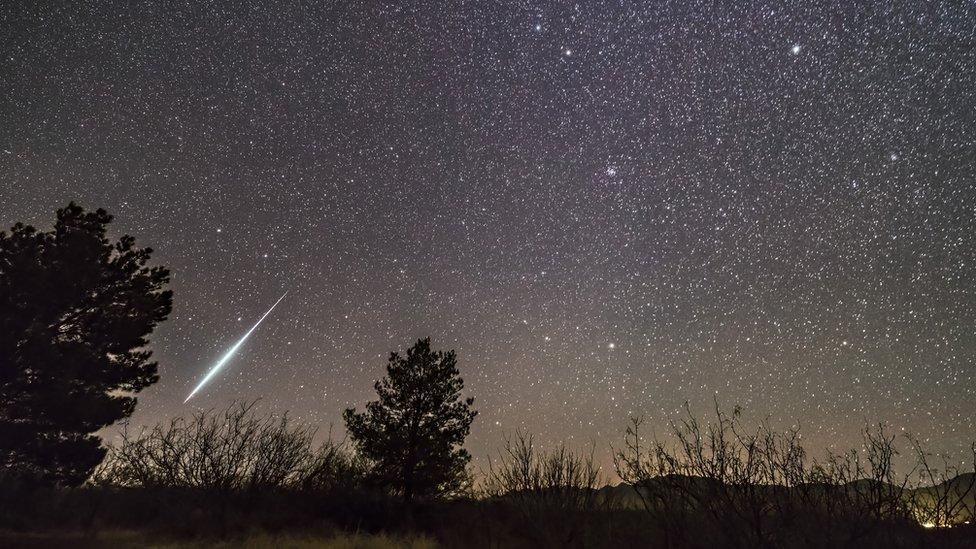Eta Aquarid: The spectacular meteor shower coming this week
- Published
- comments

A small meteor shower is heading our way!
Stargazers unite. There's a really cool meteor shower which you'll be able to see this week.
It's called the Eta Aquarid and it'll provide one of nature's biggest firework displays early on Wednesday morning, according to Nasa.
The only catch is that the Moon might be too bright making the meteor shower more difficult to see.
It's because, as well as the meteor shower, there is also a full moon on 7 May and this means it will be big all week.
What is the Eta Aquarid meteor shower?

According to Nasa, the Eta Aquarids are little pieces of rock that have fallen off Halley's Comet, which is a well-known comet that is visible from Earth approximately every 76 years.
As the famous comet races around the Sun, its rocky body crumbles under the star's intense heat. The bits that fall off are then left drifting in the space rock's trail.
Halley's Comet was last viewable from Earth in 1986 and won't be visible again until the middle of 2061.
What is a meteor?
A meteor is a space rock that falls into the Earth's atmosphere and as it falls it heats up.
The rock gets so hot that a visible glow is created around it. This is actually its heat.
So, what we see isn't actually the falling rock. It's the glowing heat around it, racing across the sky.
When lots of meteors fall all at once around the same place, the glow of heat around them gets brighter so we can see them.
As they speed across the sky, all the heat tails meet up and point to the same space in the sky.
This often looks like a shower of light in the sky.
The meteors we see have little to no chance of hitting the Earth.
They are usually really small, ranging from the size of a grain of sand to a small boulder.
There are lots of different meteor showers which are named after the group of stars in the sky they appear in and happen at a similar time each year.
Quadrantids January
Lyrids April
Eta Aquarids May
Perseids August
Draconids October
Orionids October
Leonids November
Geminids December
Ursids December
What's the best way of seeing a meteor shower?
Beginner's guide to astronomy
Once you know when a meteor shower is happening you don't need a lot of fancy equipment like a telescope.
You just a clear night with no clouds, warm clothes and some patience.
This particular shower is meant to be happening at 3.30am on 7 May.
It's important to wrap up warm as you might be sitting still for a long time - don't get cold.
Get in a comfy position, perhaps lying back on a chair, so you don't strain your neck, turn off any lights you can and go to the darkest part of the garden.
Give your eyes about 20 minutes to adjust to the darkness, then sit back, keep watch and enjoy.
- Published1 June 2020

- Published4 May 2020

